 Indians Archive
Indians Archive  Blast From The Past: Mudcat Grant
Blast From The Past: Mudcat Grant
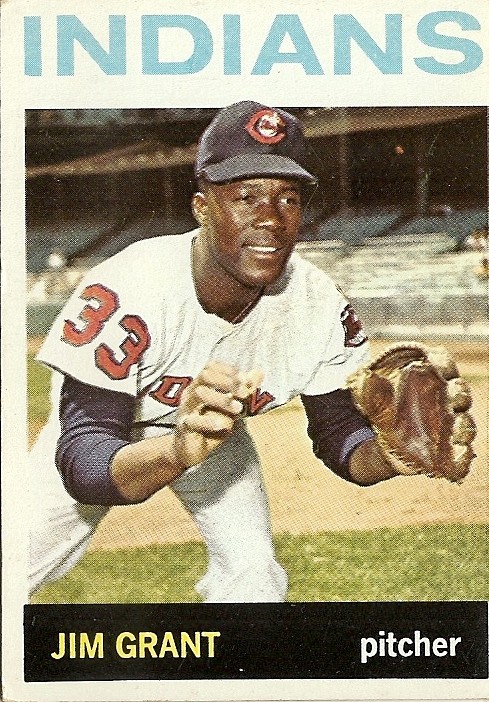 The early crowd at the stadium could only assume they didn’t get the joke. On that mid-June day in Cleveland, Indians starting pitcher Jim Grant strolled across the baseball diamond – in Minnesota Twins gear. Fans yelled at the pitcher, asking him why he was dressed in the uniform of that day’s opponent. Grant could only shrug and reply that he’d been traded.
The early crowd at the stadium could only assume they didn’t get the joke. On that mid-June day in Cleveland, Indians starting pitcher Jim Grant strolled across the baseball diamond – in Minnesota Twins gear. Fans yelled at the pitcher, asking him why he was dressed in the uniform of that day’s opponent. Grant could only shrug and reply that he’d been traded.
The explanation was more than had been offered to Grant himself. When he’d originally arrived at the Cleveland clubhouse early that day, he discovered his locker was cleaned out. Players’ lockers weren’t just used for hanging up jerseys and depositing cleats and gloves- they stored an accumulation of a player’s mail and other personal items. Grant was confused so he asked the clubhouse boy where his stuff was. The reply was it was in the visitors’ clubhouse. He’d been acquired by the Twins.
The trade had been finalized in the wee hours that morning, and general manager Gabe Paul's front office was apparently too embarrassed to inform Grant. In return, the Tribe received marginal pitcher Lee Stange and power-hitting, career minor league outfielder-third baseman George Banks. And money. As you probably know, receiving money was the key to most of the player trades the Indians made in the 1960s and 1970s. They teetered on the edge of bankruptcy, and allowed their young talent to be raided to ensure sufficient cash flow.
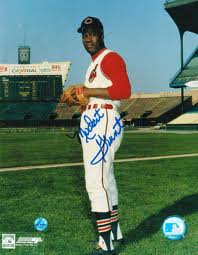 Mudcat Grant had shown some promise as both a starter and as a relief pitcher. He had originally been signed by the Tribe at the prompting of “Bird Dog” scout Fred Merkle. Merkle had noticed Grant’s talent as a rocket-armed third baseman in the Negro Baseball Tournament in Daytona Beach while he was in high school. Since Grant was still a minor, Merkle kept his distance. Grant received a scholarship from Florida A&M University to play both baseball and football, but since his family needed money, he quit college and began working as a carpenter in New Smyrna Beach. When Merkle heard about this, he reached out to Grant and signed him to a contract with the Indians. Grant famously notes that his bonus was a handshake.
Mudcat Grant had shown some promise as both a starter and as a relief pitcher. He had originally been signed by the Tribe at the prompting of “Bird Dog” scout Fred Merkle. Merkle had noticed Grant’s talent as a rocket-armed third baseman in the Negro Baseball Tournament in Daytona Beach while he was in high school. Since Grant was still a minor, Merkle kept his distance. Grant received a scholarship from Florida A&M University to play both baseball and football, but since his family needed money, he quit college and began working as a carpenter in New Smyrna Beach. When Merkle heard about this, he reached out to Grant and signed him to a contract with the Indians. Grant famously notes that his bonus was a handshake.
Fred Merkle is a subject in baseball lore which is now over 100 years old. In 1908, he was a rookie for the New York Giants. In the Polo Grounds against the Chicago Cubs in September, he stepped to the plate in the bottom of the ninth inning. The game was tied at one. With two out and a man on first base, he singled the runner to third. Accounts of the game note that Merkle could have had a double, but he astutely played it safe and stayed at first. The lead run was all that mattered anyway. The next batter was Al Bridwell- who singled. The runner on third base, Moose McCormick, scored easily. As the home crowd stormed the field, Merkle veered off his path toward second base and headed to the home clubhouse in center field. In the commotion, Cubs second baseman Johnny Evers yelled for the baseball. The center fielder threw in his direction- but some said Giant pitcher “Iron Man” McGinnity retrieved the ball and threw it into the stands. Furthermore, Christy Mathewson (who stood to be the winning pitcher) was said to have steered Merkle back to second. The official decision was that the Cubs got the force out on Merkle. The tied game was replayed. The Cubs won the game- and the National League pennant as well. League president Harry C. Pulliam was completely destroyed in the press over his indecision about scheduling the makeup game. Poor Mr. Pulliam ended up taking several months away from the game, and upon returning, took his life in his apartment.
Interestingly, this episode is commonly found described on the internet as “Merkle’s Blunder”. For nearly a century, the story was widely known as “Merkle’s Boner.” Sorry if that offends modern sensibilities; it remains “Merkle’s Boner” here. Just be careful if Googling that story!
Upon joining the Indians organization in 1954, he received the “Mudcat” nickname. Someone who thought Grant was from Mississippi first used the name. In camp, the moniker stuck- to this day.
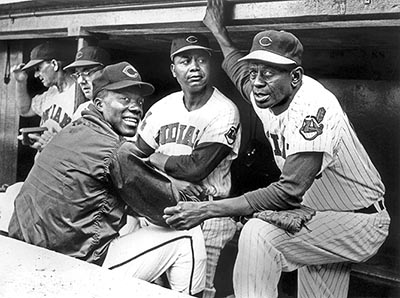 There are accounts that credit Indian Larry Doby – Grant’s roommate- with coming up with the nickname. Two thoughts on that: one, the spring training explanation is just more believable to me. It is said that Doby told Grant he was ‘uglier than a Mississippi mudcat”. I don’t buy that, although I have nothing to back it up. Second thought is that Grant has not been bashful in saying he embellishes stories because it makes them interesting. So while I don’t believe Doby gave him the nickname, I can accept the possibility that Grant has said he did.
There are accounts that credit Indian Larry Doby – Grant’s roommate- with coming up with the nickname. Two thoughts on that: one, the spring training explanation is just more believable to me. It is said that Doby told Grant he was ‘uglier than a Mississippi mudcat”. I don’t buy that, although I have nothing to back it up. Second thought is that Grant has not been bashful in saying he embellishes stories because it makes them interesting. So while I don’t believe Doby gave him the nickname, I can accept the possibility that Grant has said he did.
Jim Grant’s brother, Julious, pitched in the minors. He was given the nickname “Swamp Fire”. Not on the level of “Mudcat”, but a good try. The minor league executive who gave him that nickname was late 50s/early 60s Indians GM Frank Lane.
Mudcat Grant became a major leaguer just about a decade after the color barrier was broken. Racial segregation remained in various levels all around the country. Even in Cleveland, which had clearly separate communities and establishments based on race. Grant does give credit to Cleveland for its efforts to improve the state of racial harmony, and expresses his appreciation today. Segregation – and intimidation- were especially intense in Florida, where the Indians and several other teams held spring training.
(Sweet photo above: Grant with Doby and Satchel Paige. Appears to be related to an old-timers game.)
Back to Larry Doby: since blacks had to stay in the same hotels and eat at the same restaurants, Grant became accustomed to seeing performers such as Duke Ellington and Billie Holiday. Doby would introduce Grant to such stars. One day, Ms. Holliday’s ankle was sprained and she could not get on the stage. Grant picked her up and carried her to her spot. His mother possibly never really believed his account of meeting the singer!
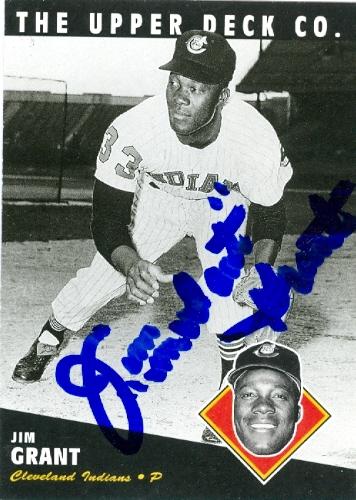 There were also incidents between Grant and members of the team that strained their relationships. One such occurrence happened at the end of the singing of the national anthem. Grant substituted his own words for the last lines, to the effect that it’s not the land of the free, and he couldn’t even go to Mississippi. A coach heard this, and threatened Grant, calling him a name. He told the player that if he ever got him in his home state of Texas… Grant stormed back to the clubhouse, changed out of his uniform and left the team. The situation smoothed over, but not until Grant refused to acknowledge the apology of the coach- who was demoted to the minor leagues.
There were also incidents between Grant and members of the team that strained their relationships. One such occurrence happened at the end of the singing of the national anthem. Grant substituted his own words for the last lines, to the effect that it’s not the land of the free, and he couldn’t even go to Mississippi. A coach heard this, and threatened Grant, calling him a name. He told the player that if he ever got him in his home state of Texas… Grant stormed back to the clubhouse, changed out of his uniform and left the team. The situation smoothed over, but not until Grant refused to acknowledge the apology of the coach- who was demoted to the minor leagues.
Grant has spoken at length during his retirement years about the hatred he allowed to rise up inside of him. At some point in his life, he decided he was not going to carry all that hatred. He willed his personality to soften. Pretty amazing story, since he is a truly lovable figure today. And to be sure, one or two of his best, lifelong friends from the Indians were southern white players.
Once Grant was traded to Minnesota, he proceeded to have a career year. In 1965, he finished 21-7 with a 2.63 ERA. He was The Sporting News American League Pitcher of the Year. He credited pitching coach Johnny Sain with teaching him a “fast curve” to complement his fastball, change and slow curve. He would later add a slider as the main complement to his heater. By the end of his career, Grant would be a curve/fastball pitcher (in that order). Here is brief footage of Grant pitching from the stretch.
After a couple solid seasons in Minnesota, Mudcat Grant bounced around the major leagues as a starter and reliever until he finally retired in 1971.
Baseball wasn’t the only thing Mudcat was good at. During his career, he served a community relations role for the team. He continued as such in retirement, and joined the Indians as the analyst alongside television play-by-play man Harry Jones on Channel 8’s game broadcasts. Most fans still use his term, “chin music”, when describing a pitch thrown up and in to a batter. Also, Mudcat Grant may be the reason you know that former Indians outfielder Charlie Spikes hails from “BOG-a LOOS-a, Loozeeana.” You owe it to yourself to pull out your Pluto’s Curse of Colavito book and review the hilarious description of Grant’s adventures with the English language, alongside a speechless Jones.
Grant continues various charity efforts to this day.
Another endeavor of Mudcat’s was his singing group, Mudcat and the Kittens. Grant sang blues and soul, accompanied by the scantily-clad Kittens. They played locally and also toured the U.S. and Europe. They appeared on Tonight Show with Johnny Carson. I cannot find a link to any performances by Mudcat and the Kittens. If anyone can locate one, could you please post it in the Indians forum on this website? Thank you in advance! On the subject of Grant’s singing voice, here he is from the teary tribute to Harmon Killebrew during his memorial this past summer. Former Twin Tony Oliva’s son accompanies Grant on the guitar.
Mudcat Grant remains an ambassador of baseball. A few teams can claim him as their own. Including Cleveland, where he still makes the occasional appearance, telling stories and generally representing the things baseball is better at than football.
Thank you for reading. Next Wednesday, let’s meet here again and start talking Browns history!
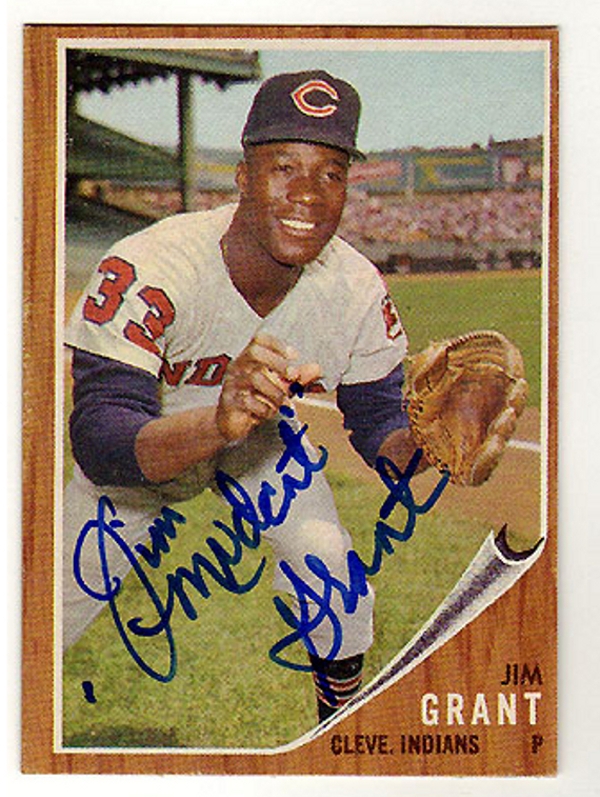
- NBA Announces 2013-2014 Schedule
- Browns Ink Sharknado
- Sharknado A No-Show For Rookie Camp
- Trent Richardson Out Until Training Camp
- Browns Sign Brandon Jackson
- Carrasco Suspended Eight Games
- Browns Add to Wide Receiver Depth with David Nelson
- Browns Need to Learn from Past Draft Mistakes
- Browns Release Chris Gocong and Usama Young
- Browns Missing on Grimes Disappointing, But Not The End
The TCF Forums
- Chris Grant's first 3 drafts
Kingpin74 (Tuesday, January 21 2014 10:13 AM) - The 2014 Offseason Thread
googleeph2 (Tuesday, January 21 2014 9:36 AM) - 2015 Recruiting
furls (Tuesday, January 21 2014 6:57 AM) - Mike Brown
YahooFanChicago (Monday, January 20 2014 11:15 PM) - Movies coming out
HoodooMan (Monday, January 20 2014 9:34 PM) - 2014 Hoops Hockey Hijinx
jpd1224 (Monday, January 20 2014 4:44 PM) - 2014 Recruiting
jclvd_23 (Monday, January 20 2014 2:26 PM) - Wish List - #4 Pick
Hikohadon (Monday, January 20 2014 1:26 PM) - Official- Browns Coach Search/Rumors
OldDawg (Sunday, January 19 2014 6:48 PM) - #1 overall pick Anthony Bennett
TouchEmAllTime (Sunday, January 19 2014 1:28 PM)



